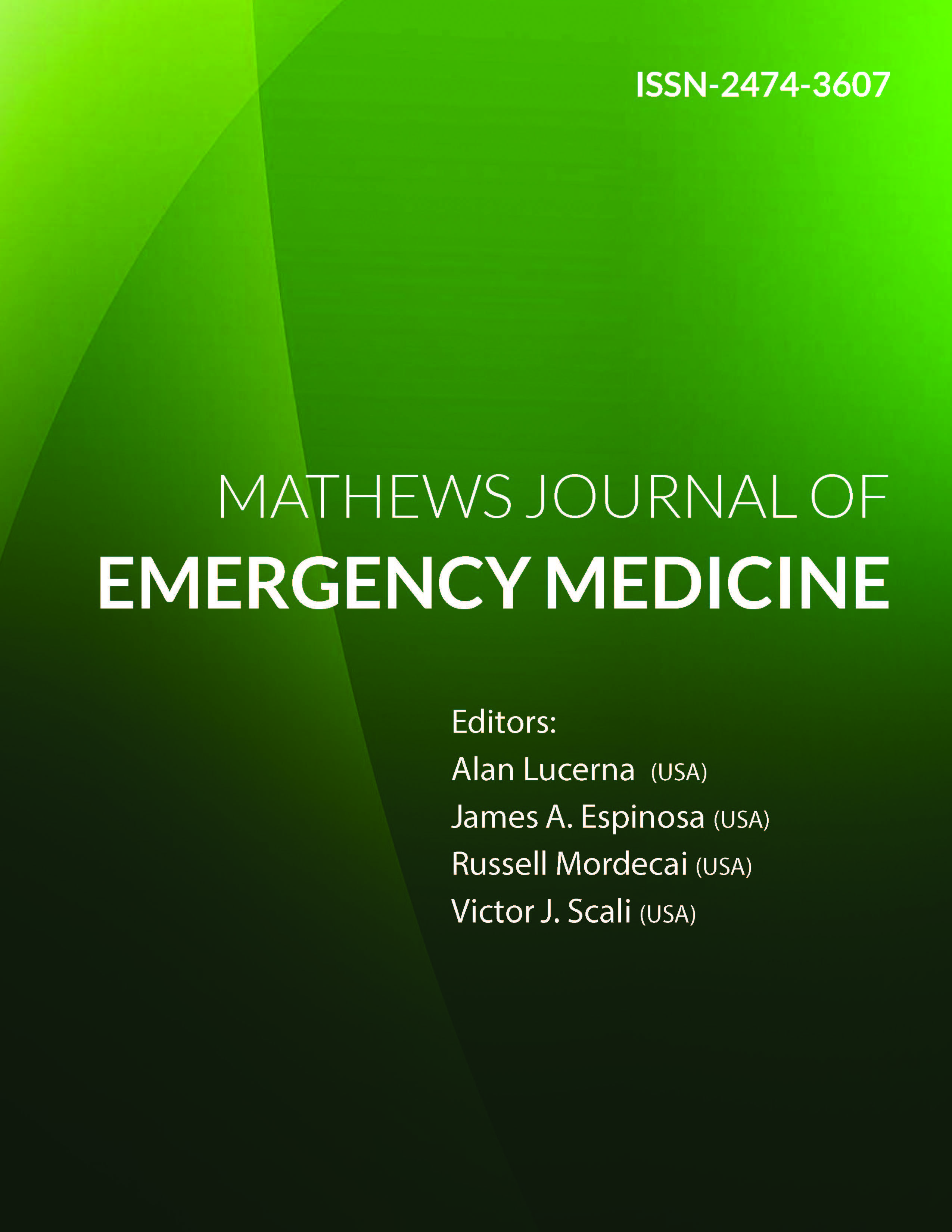
Information Links
Previous Issues Volume 2, Issue 1 - 2017
We Use Our Gut to Diagnose But Do We Have The Guts to Send Patients Home?
Analiese Wagner*, Alexander B. Norinsky, Alan Lucerna, James Espinosa
Department of Emergency Medicine, Rowan University SOM Kennedy University Hospital, Stratford, NJ, USA.
Corresponding Author: Analiese Wagner, Department of Emergency Medicine, Rowan University SOM Kennedy University Hospital, 18 East Laurel Road, Stratford, NJ 08084, Tel: (856) 256-4660; E-Mail: [email protected]
Received Date: 13 Dec 2016
Accepted Date: 03 Jan 2017
Published Date: 09 Jan 2017
Copyright © 2017 Wagner A
Citation: Wagner A, Norinsky B A, Lucerna A and Espinosa J. (2017). We Use Our Gut to Diagnose But Do We Have The Guts to Send Patients Home?. Mathews J Emergency Med. 2(1): 019.
ABSTRACT
The incidence of co-existing peripheral and central venous thromboembolic disease remains elusive. The available literature is arguably outdated and has limited applicability in today's practice at the bedside. Physicians rely on clinical gestalt along with available decision tools (e.g. Wells' and PERC) to risk-stratify patients with potential co-existing disease. Recently, many have opted to manage the majority of deep vein thrombosis cases in the outpatient setting; although still in its infancy and controversial, there has been a recent trend towards doing the same with specific populations of patients with pulmonary embolism. In this manuscript, we review three cases of patients with newly-diagnosed deep vein thrombosis who were subsequently found to have pulmonary embolism on further testing in the emergency department. Each case had a similar course and outcome, and in each instance the question was raised: in the context of a "normal" clinical evaluation and our gestalt, was it appropriate to further investigate for central thromboembolic disease in the emergency department?.
KEYWORDS
Venous Thromboembolism; Pulmonary Embolism / Deep Vein Thrombosis.